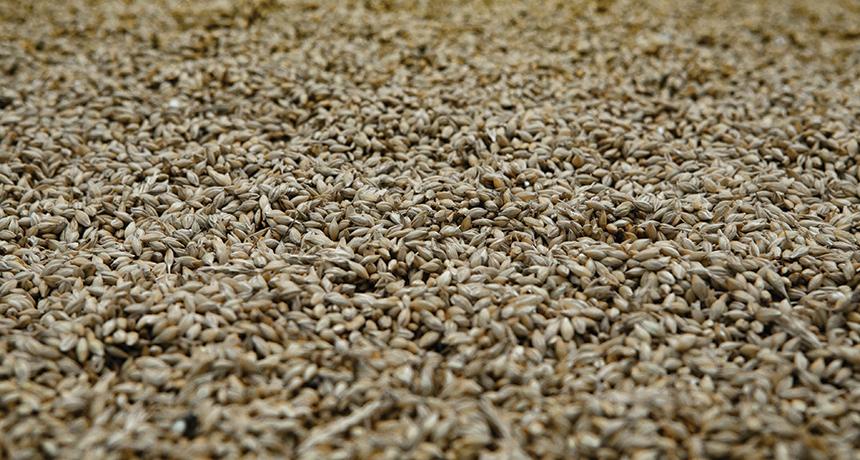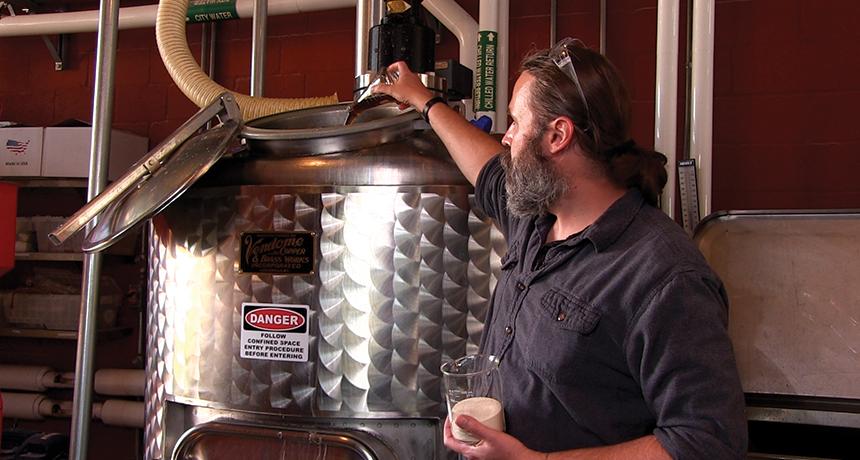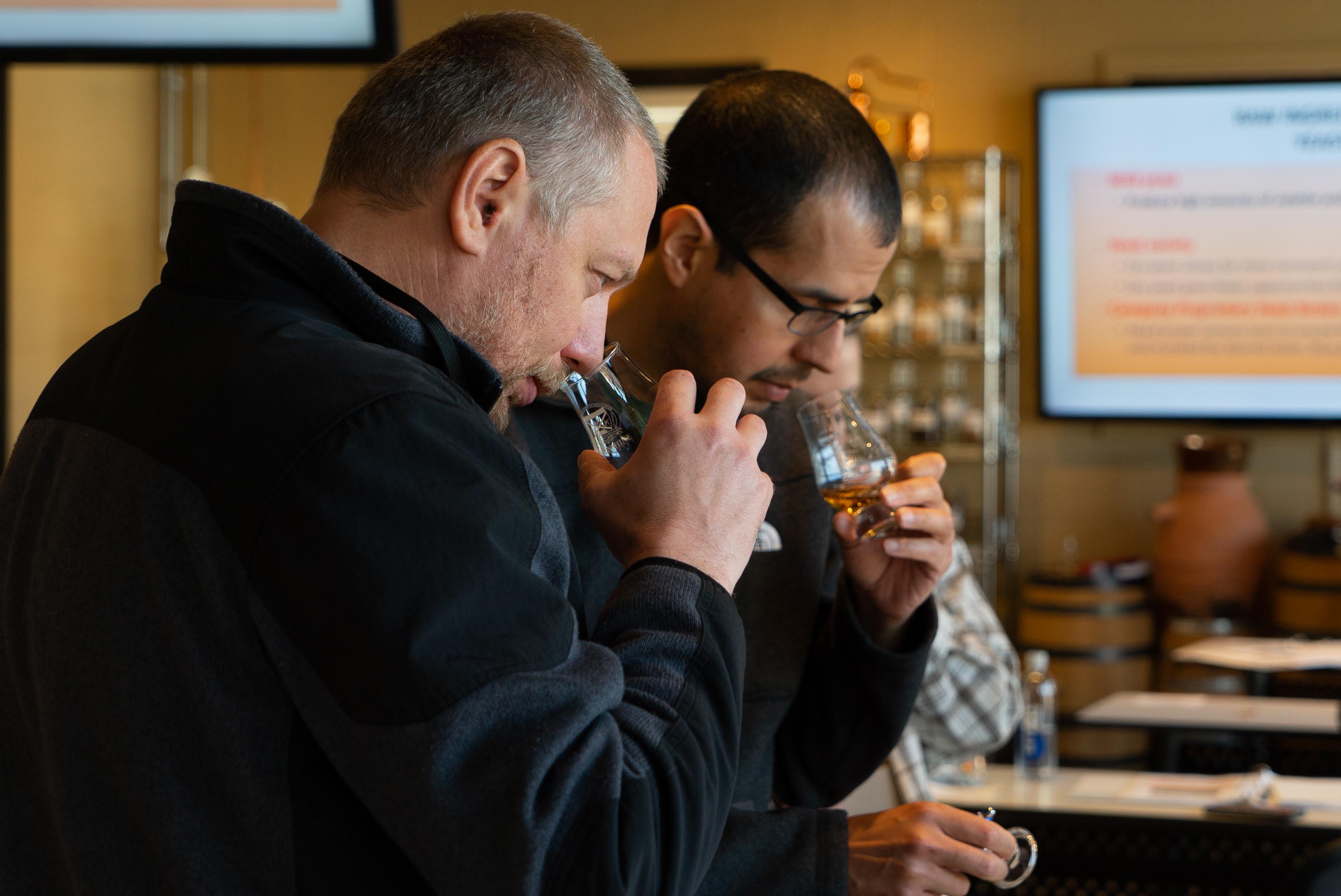
The Art of Non-Alcoholic Spirits
blog
For decades, spirits and cocktails have fostered a culture of craft, connection, and celebration. But over time, cocktail culture has evolved far beyond the buzz!

Written by Andrew Fratianni, Senior Application Specialist - Brewing & Distilling Enzymes, DuPont
Shiny copper stills, "white dog," and rare, $3,000-a-bottle bourbon get all the glory, but there are a few unsung heroes that make it all possible. In addition to the distillers who toil ‘round the clock, there is yeast and then there are enzymes.
Each yeast cell produces thousands of its own enzymes just to survive and function, on top of creating the alcohol for your favorite tipple. But without these important enzymes, there would be no spirits, no distilling industry, no job for you, and let's face it, no fun in life for any of us.
Let's take a look at the primary enzymes in distilling and then briefly review what you need to know to keep them functioning at an optimal level.
Unless you're using sugar, molasses, or fruit juice for feedstock, then you're probably relying on a starch. If you're starting with a grain of any kind you will need to convert the starch into fermentable sugars before your yeast can begin fermentation and produce alcohol.
The list of grains that can be used is quite extensive- corn, barley, malted barley, rye, wheat, rice, and so on. If it is a grain, then it has starch. Potatoes, too.
Starch is the storage form of carbohydrate that plants need for energy and its basic building block is glucose. Yeast ferments glucose. That's fairly simple- but first, the starch needs to be broken down into a form that makes the glucose available for the yeast to consume. This is where enzymes come in.
The process of turning starch into fermentable sugar starts with the enzyme, alpha amylase. But before it can begin its important work, we first need to expose the long chains of starch; that's why we cook the mash. When mixed with hot water, starch absorbs the liquid and expands.
Eventually, like an overfilled water balloon, the starch bursts open, spilling out all its contents in the form of long chains of gelatinized starch. You'll know when this happens because the cook will suddenly become very thick and highly viscous. Gelatinization is vital to achieving any reasonable ethanol yield; but note that even though different grains contain the same types of starch, the temperature at which they gelatinize may vary.
Alpha amylase is then ready to attack. This enzyme has the capability to quickly break down almost any bond it comes across in a starch- no matter from which grain it is derived. Liquefaction occurs when the alpha amylase has broken up the long chains of gelatinized starch into many smaller chains. When this happens, you'll see the viscosity of the cook change into a thinner, more liquid form.
Gelatinization and liquefaction follow one another very quickly in the cook, if not occurring simultaneously.
To form glucose, another enzyme is required: glucoamylase, also known as GA, AMG, or amyloglucosidase. As the alpha amylase breaks up the long starch chains into many smaller chains, it creates many new ends. Glucoamylase only works from the ends.
When alpha amylase has done its job, glucoamylase can form glucose in the cook. That is what the yeast will eventually ferment. This third, and final step, is called conversion or saccharification. At this point, the enzymes have now turned starch into fermentable sugars. The cook tastes much sweeter at this point.
With these two enzymes, you will be able to produce nearly 100% glucose which will make your yeast quite happy. However, in starch, there are some branch points in those long chains that alpha amylase and glucoamylase cannot break. If you want to completely break down the starch and get the highest yield of alcohol possible, you will need to break these branch points, too. For this you need a debranching enzyme, called pullulanase.

If you use rye, wheat, or raw barley, you may face another challenge with viscosity- not caused by starch, as mentioned above, but by the non-starch polysaccharides in the plant material.
But don't worry. There is an enzyme for that, too! Meet beta-glucanase.
This enzyme will help reduce the viscosity caused by the cell wall material in certain grains. This material is also made up of glucose, and although they cannot normally be fermented, they can cause a high level of viscosity.
Rye, for example, is known for its thick, sticky cooks; so another enzyme, xylanase is particularly helpful when used with this grain. It will help to prevent the excessive foam, rolling fermenters, and plugged heat exchangers that are common to rye.
It is indeed possible to cook and ferment by using only malt in the cook and conversion; however, malt enzymes can vary in quantity and the enzymes in malt normally function at narrower pH and temperature ranges than commercial enzymes. There are quality and yield risks to be considered.
For example, the gelatinization of corn starch is higher than the deactivation temperature of malt alpha amylase: when you use malt only, you are hoping that you can reduce viscosity quicker (liquefaction) before your enzyme deactivates but that's a delicate balance to maintain. If you don't quite manage that delicate balance, well, now you know what a cooker full of grits looks like!
Enzymes that you purchase, called commercial enzymes or exogenous enzymes, will normally function in wider pH ranges and wider temperature ranges than enzymes in the malt. There is no variation as they offer consistent concentration and predictable results over a wide range of cooking conditions- that's their main advantage. They can also help reduce energy use and there are even non-GM and organic versions available, if that's something important to your product.
In the case of beta-glucanase and xylanase, these are enzymes that are limited or completely lacking in malt. They are an option and a process aid designed to give consistent results, consistent yields of alcohol, and consistent processing. Monday does not have to be the worst day of the week!
No matter the source of the enzymes you use, following some basic guidelines will allow them to perform at optimum activity.
First, the temperature is very important. Enzymes function at a specific temperature range and this temperature range differs for each enzyme. Sometimes they overlap in the cook and sometimes they do not, so make sure you know the optimal temperature range for each enzyme in your process, measure the temperature at each step- and do it often!
Next is the pH. It's like temperature in that there is an optimal range for each enzyme and you should know what that is for each enzyme in your cook. You need a good pH meter- no pH strips!- to monitor the pH in your process. The price of a good pH meter is quite reasonable these days. Make sure to keep it calibrated and store it properly, too.
Making spirits is a process we have been doing for hundreds of years- it was an art form long before we knew the science behind it. Observe, measure, use your knowledge and a few simple tools to maintain consistency. Demand is high and raw materials are costly; paying attention with a few simple guidelines will help to deliver a maximum yield with the best quality results.
Written by Andrew Fratianni, Senior Application Specialist - Brewing & Distilling Enzymes, DuPont. Andrew is also a faculty member at Moonshine University, where he teaches at the 6-Day Distiller Course.
Interested in advancing your knowledge of distilling and the spirits industry? Check out Moonshine University's upcoming courses to learn from the best in the business.
Related Content

blog
For decades, spirits and cocktails have fostered a culture of craft, connection, and celebration. But over time, cocktail culture has evolved far beyond the buzz!

blog
Those that are familiar with the process of crafting distilled spirits may also be familiar with the 10 common congeners that are created during fermentation, and honed during the distillation run. Each congener has its own distinct personality, rendering unique tastes and aromas to the finished spirit.

blog
So, you want to start distilling with freshly milled grain. Maybe you're tired of paying top dollar for the pre-milled stuff from the malt distributor, and you're ready to invest in the quality, efficiency, and bulk pricing that comes with milling your own whole grain. But where do you start?